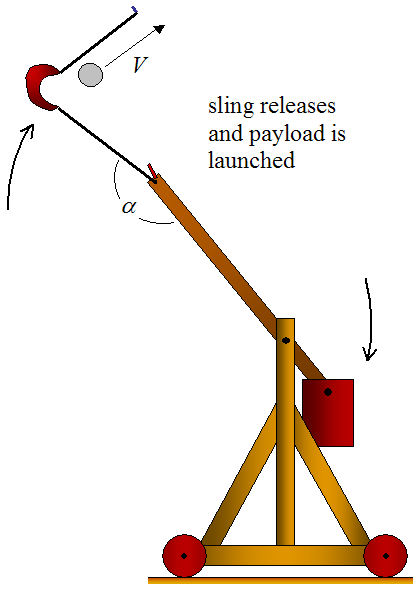Nov
2017
Archemedes Challenge: Trebuchet – Emmi Blk D
Part 2:
History of the Catapult:
Where was it invented?
The Trebuchet was invented in ancient China originally in the 4th century, and some documents were made of it in 1324, which the french engineer Renaud Beffeyte built his modern version from in 1984.
Who originally made the trebuchet?
Thought there are no documents of who exactly made the trebuchet, it is only recorded that ancient Chinese built the first working trebuchet.
When was the trebuchet invented?
There are different variations of when exactly it was invented, but 4th century china, and the 1300’s was when the trebuchet became popular.
Why was the trebuchet invented?
The trebuchet was built with the intention of throwing projectiles in sieges and battle, dating back to the battles in china. warfare was greatly enhanced by the trebuchet because it made a stepping stone for more advanced technology in warfare.
What were the short and long term implications of the trebuchet?
Short term implications would be destruction and more battle, sieges, and wars becoming more agressive. But in the long term, the trebuchet was a very successful invention that greatly increased designs for more advanced warfare technology.
Part 3:
The physics behind it:
this diagram sums up the physic behind the trebuchet, but to elaborate, it runs on kinematics, and different energies. when loaded and at rest, the machine has potential energy that sits in the sling, with the load, and when flung, or released, the kinetic energy is pulled into play, replacing the potential. Once released, the load, or ball, in this instance is forced through the air by the acceleration of the bar that hold the sling in place, and the load then reaches a constant velocity. the velocity is based on how fast it is released, which depends on the mass of the counter weight, the box opposite the sling. the counterweight pulls the bar down on one end, which then creates a chain reaction of: Counterweight released, bar pulled down, sling is flung up, load is released from sling into constant velocity, and finally the load coming with impact on its target (hopefully). The trebuchet also contributes to Newton’s Third Law of Motion which is as follows: “For every action there is an equal and opposite reaction”. in this, case, the end of the bar with the counterweight pulls that end down, which pushes the opposite end that equal amount upwards with the load, accelerating the load at that equal force into the air.

So if we were to use formulas and equations, a possible way to do so would be to find the that the trebuchet does, (½ ⋅ m ⋅ v²) would find the kinetic energy. of course you would need to do some runs to see what it velocity is, or you could use the initial velocity which should be 0 m/s.
Day by day process:
Day 1:
On the first day, Sarah and I discussed which invention we wanted to build, and we ended up deciding on a trebuchet.
Day 2:
On day 2 we came to class with our materials, and figured out how we were going to lay out our base so it could be the most stable.
Day 3:

day 3 consisted of continuation of the building process of the trebuchet. Sarah got burnt on this day from hot glue.
Day 4:
Day 4 was mostly building and last minute touches, with some trial runs to see if it worked. it did, and we were very happy about this, as we weren’t sure if it was going to work properly, but it did.
Day 5:
the last day of building, we were done with alterations and test runs, so we decided to take it outside and spray paint it. after that we did one more test, and it was complete!
Sites used:
http://www.stormthecastle.com/trebuchet/history-of-trebuchets.htm
http://www.lordsandladies.org/trebuchet.htm
http://redstoneprojects.com/trebuchetstore/trebuchet_history.html
http://www.ancientfortresses.org/trebuchet.htm
https://www.real-world-physics-problems.com/trebuchet-physics.html




